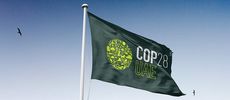Hygiene Standards Make Drinking Water Safer in the European Union


As a result of revisions to the European Union's Drinking Water Directive in 2020, strict new drinking standards went into effect in the EU in January 2021. The revised Directive was reached in response to "Right2Water," a successful European Citizens' Initiative, guaranteeing safer access to water for all Europeans.
Every country in the EU was supposed to pass legislation based on the Directive by January 12, 2023, but as of January 2024, six have yet to do so. Required changes include updates to water quality standards established two decades ago, the implementation of a risk-based approach to monitoring contaminants, and stricter hygiene standards for materials in contact with drinking water supplies.
The rules require new methodologies and guidelines for water suppliers and environmental testing labs, including how to measure microplastics and per- and polyfluoroalkyl substances (PFAS) in drinking water. Here's what the EU Drinking Water Directive hopes to implement and how lab managers can help realize these goals.
New Parameter Limits and Risk-Based Surveillance
The EU Drinking Water Directive introduced stricter limits for substances a World Health Organization (WHO) study found hazardous to health. These parameters address disinfection byproducts, PFAS, lead, and chromium. Suppliers must also monitor three endocrine-disrupting compounds (bisphenol A, beta-estradiol, and nonylphenol) throughout the water supply chain.
Additionally, the Directive includes a risk-based approach to surveillance that includes water quality monitoring, on-site inspections, hazard identification, and risk and trend analysis. This approach shifts the emphasis from water quality testing to a more proactive strategy that focuses on identifying, controlling, and monitoring hazards to the water supply. The responsibility lies with water suppliers to assess and manage risk from the catchment area through treatment and distribution to the tap that dispenses water to consumers.
The approach follows the WHO Guidelines for Drinking Water Quality, which uses the water safety plan method. These plans will become mandatory for water providers by December 31, 2026. WHO has identified approximately 35 substances for further investigation, including microplastics, pharmaceuticals, and additional endocrine disruptors. The watch list, updated every two years, will help identify potential risks at an early stage and guide changes to the treatment process, if necessary.
Stricter Hygiene Standards for Contact
The European Commission also adopted new minimum hygiene standards for drinking water. By the end of 2026, the standards will apply to materials and products intended for use in new installations—or renovations or repairs to older installations—for water abstraction, treatment, storage, or distribution. The standard also applies to supply pipes, valves, pumps, water meters, fittings, and taps.
Lab testing will verify that manufacturers meet the requirements. The materials can't have effects detrimental to human health, adversely affect the taste, color, or smell of water, increase microbial growth, or release significant quantities of contaminants into water.
Maintaining the standards across the EU member states will not only make water safer to drink, but it will simplify administrative work for manufacturers and national authorities. Materials and products that comply with the hygiene standards will receive an EU declaration of conformity and an EU-specific marking.
Additionally, the European Chemicals Agency (ECHA) is preparing lists of approved substances, appropriate testing methods, and migration limits. New requirements are stricter for organic and cementitious materials, which are higher risk than metallics and ceramics. If a substance is not on the approved list, it can be used only if there is no possibility of migration into water at levels higher than 0.1 μg/l. Until the ECHA publishes the approved lists in January 2025, national and international standards apply.
Certification of Test Labs to Meet EU Regulations
The latest directive introduces a domestic distribution system for Legionella testing and reinforces intestinal enterococci testing. To monitor sites for Legionella, member states must determine what they consider priority premises and implement regulations at least as stringent as the EU directive The Group A parameters now include intestinal enterococci along with E. coli and coliform bacteria. Labs must adjust workflows to ensure their testing methods can provide accurate results for one-to-one testing between intestinal enterococci and E. coli. The local water distribution volume determines the minimum frequency for sampling.
Testing labs in the EU must produce high-quality, reliable analytical results to meet the proposed water quality standards, risk-based monitoring, and hygienic standards for drinking water. To demonstrate competence, labs should have an ISO/IEC 17025-2017 "General Requirements for the Competence of Testing and Calibration Laboratories" certification. This accreditation is the guide to delivering accurate, reproducible, and precise analytical results that comply with the latest EU environmental regulations.






